Marketing campaigns can be used to accomplish a countless number of goals.
While many B2B companies choose to focus on high-impact, measurable goals like generating leads and sales, it’s important to remember that these actions are often the result of weeks, if not months of research and deliberation on the customer’s part (AKA the buyer’s journey).
If you want to affect these end-game numbers, you have to start at the beginning.
The first step each customer takes on the path to conversion is simply becoming aware of your brand. And in the lengthy B2B sales cycle this isn’t a one-time effort. It’s important to stay top of mind, engaged with your prospects throughout the buyer’s journey - from initial research to the final discussions with key decision makers. So, if you’re not yet using marketing campaigns to improve your brand awareness and reach new customers, it’s time to start.
* * *
Why Does Brand Awareness Matter?
If brand awareness isn’t yet a priority in your B2B marketing strategy, you may be wondering if improving it's even a worthwhile goal. After all, merely making a prospective client aware of the company doesn’t drive revenue.
And it’s true: awareness doesn’t guarantee an instant sale. But it is an essential first step in the sales process, and it can have a major impact on whether a prospect decides to learn more about your company and what you have to offer, or walk away. It presents an image of the type of company they will engage with, and when implemented properly, it can provide value and resources to prospects before they even reach out.
It’s also important to note that driving awareness doesn’t just mean getting your name in front of your target audience. Your brand is much more than your company’s name and logo. It's how consumers perceive your company, products, and services, and where you stand amidst the competition.
So, as you look for ways to drive and measure awareness, don’t focus solely on reach. Instead, focus on creating the types of positive associations you want people to have with your brand.
Wait a minute. Isn’t creating warm fuzzies primarily a B2C concern?
Not necessarily. Although it’s true that B2B purchasing decisions are typically made by a team and not by one single person, that team is ultimately made up of people—and the way that each of them feels about your brand can be the determining factor in whether they choose to work with you or not.
Even after you’ve earned a new client, brand perception can shape whether they stay with you or switch to a competitor. One Econsultancy survey found that 49% of B2B marketers achieve better ROI by investing in relationships over acquisition marketing, so improving your retention rates could have a significant impact on your overall revenue.
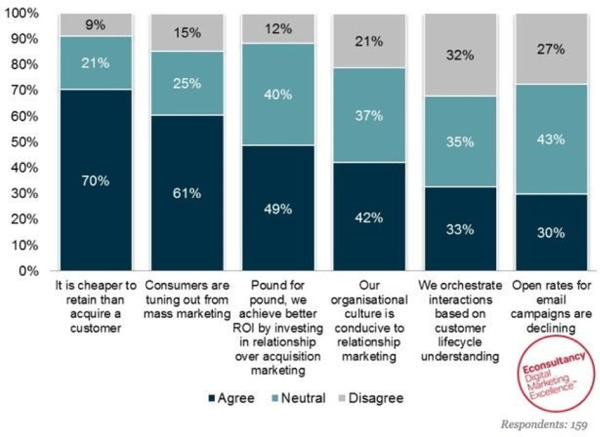
If reaching new prospective clients and shaping their perceptions of your brand aren’t yet goals in your marketing strategy, it may be time to pivot.
It’s not as complicated or time-consuming as it may sound, and the investment you make in these campaigns can actually fuel the rest of your funnel. As you create awareness-stage content, you can also repurpose it for other marketing goals to get more bang for your buck.
For example, let’s say you create a video about your brand and what sets you apart from your competitors. It likely includes information about your company history, mission, and employees. It may seem like this video is only useful for brand awareness, but if you write case studies, blog posts, or other long-form content as lead magnets, you could easily work your video in as a way to highlight why your company was uniquely equipped to solve a customer problem or a specific pain point within the industry.
By repurposing awareness-level content, you can make the most of each piece and make the experience of engaging with your brand as consistent as possible.
* * *
4 Ways B2B Companies Can Improve Brand Awareness
Shaping perceptions of your brand can be a challenging task. Many consumers already have preconceived notions of what a company represents before they engage with a single employee, and changing those notions isn’t always easy.
But with a strategic approach to brand awareness, it’s entirely possible to reach members of your target audience in ways that create positive associations with your company and show them what your brand really stands for.
1. Be Active on Social Media
One of the best strategies for improving brand awareness is maintaining an active presence on social media.
Much like brand awareness campaigns as a whole, social media marketing is often seen as a strategy that’s primarily beneficial for B2C marketers. But now that more than 82% of Americans use social media, nearly any business can find and reach their audience with a combination of the right channels and messaging.
No matter who your target audience is, there’s a very strong chance that at least a portion of them are active on social media. The most obvious advantage, then, of using top social media sites is that they have the potential to get your brand in front of a large, established user base.
In fact, according to Social Media Examiner’s 2021 Social Media Marketing Industry report, 83% of marketers who have been using social media marketing for at least one year say it generated exposure for their business.
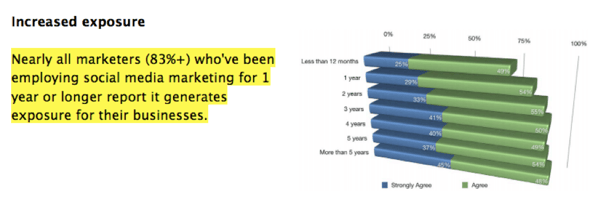
Given these platforms’ large user bases, this may not come as a huge surprise. But it’s also worth noting that an increase in leads often accompanies this increased exposure.
In the same survey, 65% of marketers who’ve been using social media marketing for at least two years say it has generated leads for their business.

So, if your company has previously avoided social media for fear of low ROI, that doesn’t need to be the case.
Where to Start?
There are dozens of social media channels, and new ones launched nearly every year. A common mistake made by many marketers is to chase the fresh new platform, thinking that’s where users will migrate. But audience is key. As a B2B company, your primary audience is other business leaders--often decision makers and executives in large firms who are generally difficult to engage.
And with most people separating personal and professional use of social media, the best way to engage is through the most targeted channels. In this case, LinkedIn. LinkedIn is the most popular business-oriented social media channel, used by 97% of B2B marketers who include social media in their marketing strategies. LinkedIn’s internal reporting shows that 94% of those marketers use LinkedIn to distribute content, significantly more than other channels like Facebook and Twitter, and there are 8 billion content impressions on LinkedIn every week.
Even more telling is that LinkedIn drives 50% of all social traffic to B2B content campaigns. Facebook, despite having the largest population of users in the world by a healthy margin, only accounts for 10% of that traffic. People use LinkedIn while at work, they engage with colleagues and network to further their careers.
When using LinkedIn, they are in a business-mindset, not something you’ll find on other social media channels. As such, they are not only more likely to see your content, increasing brand awareness. They are more likely to engage with it and return to your website.
It’s so much better than the other channels that 91% of executives cited LinkedIn as the best place to find quality content related to their industry. Only 29% said Twitter or Facebook. And with 45% of the people who read articles and engage with content on LinkedIn holding management or executive positions, you’re reaching the right people at the right time. Simply put, LinkedIn is the most important place to distribute content and grow brand awareness as a B2B marketer.
What About YouTube?
For brands, YouTube is more than a social channel. It is a search engine unto itself, with 80% of users switching between search and video when researching a new topic. With 2 billion users, it also rivals the largest social media channels, and it accounts for several hours a day of activity per user. YouTube is a wider network than any broadcast or cable TV network, and among millennials, increasingly making up a larger percentage of the decision-making workforce in large companies, YouTube accounts for more than 65% of video watched online.
YouTube is an opportunity to grow your brand, present new and exciting ideas, repurpose existing content from past marketing campaigns, and access large audiences via programmatic advertising efforts. It should be a part of your overall content marketing strategy for B2B brand awareness going into 2022.
2. Show Some Personality
Choosing channels for your brand awareness campaigns is an important step in the process, but it’s the content itself that ultimately determines whether you succeed or not. If it’s boring, uninformative, or disingenuous, it’s not going to do you any favors.
Before you publish your first social media post or write your first set of ad copy, you need to determine what kind of associations with your brand you want to create.
Do you want prospective clients to think of your brand as innovative?
Sophisticated?
Socially responsible?
The attributes you focus on will play a significant role in shaping the content you create, so it’s important to have a clear idea of those attributes early in your campaigns.
Of course, this decision should be based on your target audience and their expectations. B2B brands targeting start-ups, for example, can get away with more snark and playfulness than those focused on larger corporations with older, more buttoned-up executives.
The whole point of building brand awareness is to ultimately build trust—alienating half of your prospects definitely won't help.
When all else fails, be real and sincere. These are traits that all consumers, whether they are B2C or B2B, are coming to value more and more. In fact, according to a 2021 study from Sprout Social, customer service and engagement are vital to brand perception online:
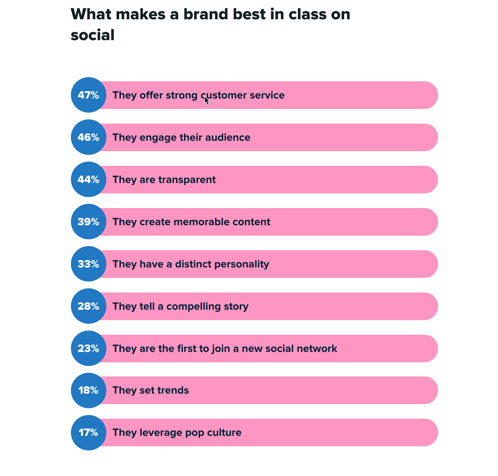
As you determine the kind of reputation you want to create, it’s essential that your brand remains unique. The vast majority of B2B companies want their brand to come across as "professional" and "trustworthy"—great in theory, but there needs to be more to it. If associating your brand with these common attributes is your only goal, it’s unlikely that your campaigns will have much of an impact.
To reach your goals, you’ll need to determine what differentiates your brand from the pack. Then, you can use those differentiating factors to shape a unique brand voice. This will not only give you a more concrete idea of the kinds of content to include in your campaigns, but it will also help you stand out to your audience. And as you establish your brand as different and interesting, you’ll also become more memorable to prospective clients.
3. Create Original Content
Content marketing is an extremely popular strategy among B2B marketers. In fact, Content Marketing Institute’s 2018 B2B Content Marketing report found that 93% of B2B organizations are already using it.
The same survey found that of the B2B marketers who aren’t yet using content marketing, 54% plan to launch a content marketing strategy within the next 12 months.
If you’re an experienced B2B marketer, you’re probably well aware of the value of content marketing for generating leads and driving sales; you may even have a strategy in place. But are you aware of content marketing’s potential impact on brand awareness?
On a technical level, creating original content related to your audience’s questions and needs gives you the opportunity to rank in search results for the keywords they search on Google and other search engines. In some cases, this will be their first introduction to your brand.
If a member of your target audience then clicks through to your site as the result of a search and likes the content they find, you can establish your brand as a helpful source of information right from the start. Even if they aren’t yet ready to make a purchase or other high-level conversion, you’ve still created a positive association with your brand.
Then, when they are ready to evaluate their options and make a decision, there’s a much better chance your company will be included in the process—and the information you’ve already provided just might tip the scale in your favor.
Remember, it's all about that buyer's journey:
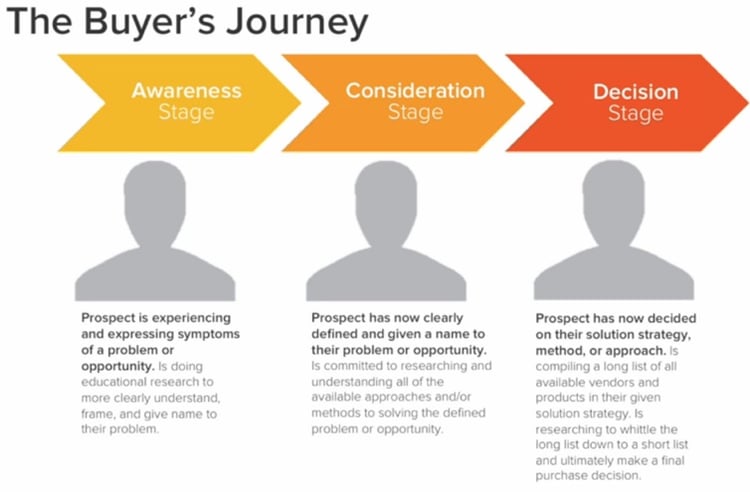
It’s also worth noting that unlike paid campaigns on third-party platforms, it doesn’t cost much to continue attracting organic traffic and leads with content once you’ve published it. While ad campaigns typically show results faster, content marketing has the potential to be a more cost-effective strategy long-term and can help you create a lasting resource for your audience.
Plus, as you create original material for your content marketing efforts, you can also repurpose it to strengthen your other marketing strategies, as mentioned earlier. For example, videos featuring customer testimonials and reviews are a popular content format for B2B brands. And once you’ve created them, you can easily share them to your social accounts to build trust with your followers.
So, although creating original content is an investment in terms of time and resources, it’s one that can pay off in many ways for your business and have a positive impact on your marketing campaigns across the board.
4. Develop an Outreach Strategy
Your company’s website and social media channels are excellent starting points for a brand awareness campaign. You have complete control over what’s published and how it’s promoted to your target audience. But once you’ve developed a strategy for managing them, you need to start increasing your reach to other channels.
The best places to focus on are where your audience already spends time online.
If you make it a priority to keep up with industry news and trends, you likely already know exactly where that is. For most B2B audiences, it’s a combination of major news outlets and smaller, more niche industry publications. Getting your brand mentioned on those sites can be an extremely effective way to reach prospective clients. That’s where an outreach strategy has the potential to be a great addition to your brand awareness efforts.
Once you’ve determined your target sites, look for ways to provide value to their audience. If you’re already publishing original content on a regular basis, this can serve as a solid starting point. For example, if you’ve conducted original research, collected helpful data, or put together an interesting case study, publications that focus on your industry may want to share this information with their readers.
Reach out to their editors with a brief pitch explaining what you have to offer, and they may reward you with a valuable brand mention that not only gets your company in front of a relevant audience, but positions it as an industry leader.
If you’re not sure where to begin with your outreach efforts, you can also use HARO to connect with journalists. Sign up as a source for topics related to your industry, and you’ll receive daily emails with lists of information requests from writers across the Web.
If you’re able to provide the information a journalist is looking for, you’ll get credited as a source—and in many cases, that also means getting a link back to your company’s site.
5. Innovate in Your Content Marketing
The very idea of content marketing is to provide value to readers and generate trust that transfers from a small transaction of information to a larger relationship with your brand. So the first question to ask whenever you publish a piece of content is “does this offer value?”
Unfortunately, the answer is increasingly no, and it’s not because of a lack of effort. B2B companies spend 26% of their marketing budget on content marketing and 91% of companies surveyed used the strategy in some form. Rather, the problem is how saturated most markets are with cookie-cutter content marketing strategies. The same short blog posts touching on the same basic topics over and over again, getting lost in the noise of hundreds of competing channels doing the exact same thing.
We firmly believe that for a content marketing campaign to be successful, it needs to be innovative. Different. Exceptional. It needs to go beyond the same tired blog posting strategy, and build something beyond the ordinary that will not just capture attention, but hold it, and provide actionable value to your target prospects.
So what does an innovative content marketing strategy look like?
It Leverages Technology in New and Exciting Ways
AI is more affordable, accessible, and engaging than ever, allowing companies to scale activities and reach a larger audience without increasing budget substantially. Chatbot technology can create constant touch points on your website when programmed properly. Tools like Broca allow you to test thousands of ad variants quickly to find the most effective messaging to promote your content campaign. Leverage these more accessible tools to build a robust, wide-reaching campaign.
It Relies More Heavily on Visual Content
Written content still has a place in content marketing, but video and highly interactive content go above and beyond what traditional website copy ever could. We process visuals 60,000 times faster than the written word and retain a much higher percentage. A combination of low-stakes text to video technology to repurpose written content and highly produced content that represents your brand effectively can tap into the power of visual storytelling.
Content marketing that takes into account more than just the hottest keywords in your industry will help you build and grow beyond your current audience. Carefully produced, heavily researched, and meticulously matched to your brand and target audience, the right content marketing campaign can set you apart from the competition.
6. Leverage Programmatic for B2B
B2B marketers are faced with a range of challenges that narrow their audience, and require more considered, targeted marketing efforts than their B2C counterparts. A larger number of decision-makers, longer sales cycles, and higher overall price points create more friction in the marketing funnel. Programmatic advertising can help address this.
Why is programmatic a must for B2B marketers in 2021?
To start, the targeting opportunities are growing exponentially. Brands can leverage first-party data to target existing customers and prospects with digital ads, build look-alike audiences specific to individual channels, and create custom targeting lists from other channels - including trade shows, sales partners, or prospecting data from resources like LinkedIn Sales Navigator. It doesn’t stop there. Outside sources like Bombora, Dun & Bradstreet, 123Push, and Stirista, integrated with AI tools can build a powerful, dynamic system that actively reaches out to engages your prospects to grow awareness of your brand.
Another challenge faced by B2B marketers is the length of the sales cycle. With some B2B sales cycles lasting as long as 6-12 months, it’s imperative that you stay in touch with them throughout. No matter how good those initial conversations are, if they forget about you, when the time comes to make a decision, your early efforts may not pay off. Programmatic provides another channel through which to nurture your prospects, keeping your brand at the top of their mind throughout the long cycle during which they consider your proposals.
Combined with a robust content marketing campaign that leverages innovative tactics and cutting edge technology to target content to the right audience at the right time, you can provide value to your prospects as they weigh their decision.
B2B programmatic advertising provides a robust new channel through which to build, retain, and nurture an audience wherever they are in the sales cycle. Brands cannot afford not to be top of mind when it can take months to close a deal. Programmatic helps make this possible.
* * *
Conclusion
Improving brand awareness is a goal that’s often overlooked by B2B marketers, but it can have a significant impact on their ability to reach and retain new clients. If you’re not yet taking steps to create positive associations with your brand among your target audience, a brand awareness campaign could be a great addition to your marketing strategy.
Fortunately, achieving the results you want doesn’t need to be difficult. Be active on social media, don’t be afraid to show some personality, create original content, and look for ways to get your brand published on the sites where your audience spends time online.
These four steps can go a long way in shaping perceptions of your brand and what it stands for—and in bringing valuable new clients to your company.
.png?width=250&height=153&name=CSI-OverskiesRebrand_LOGO-01(smaller).png)

.png?width=100&height=61&name=CSI-OverskiesRebrand_LOGO-01(smaller).png)


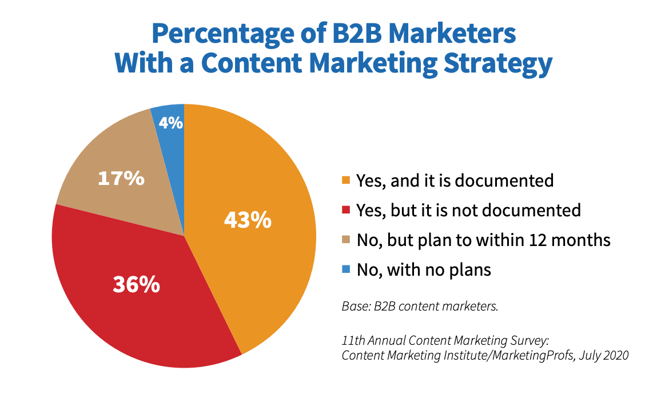
.png?width=88&name=CSI-OverskiesRebrand_LOGO-01(smaller).png)

